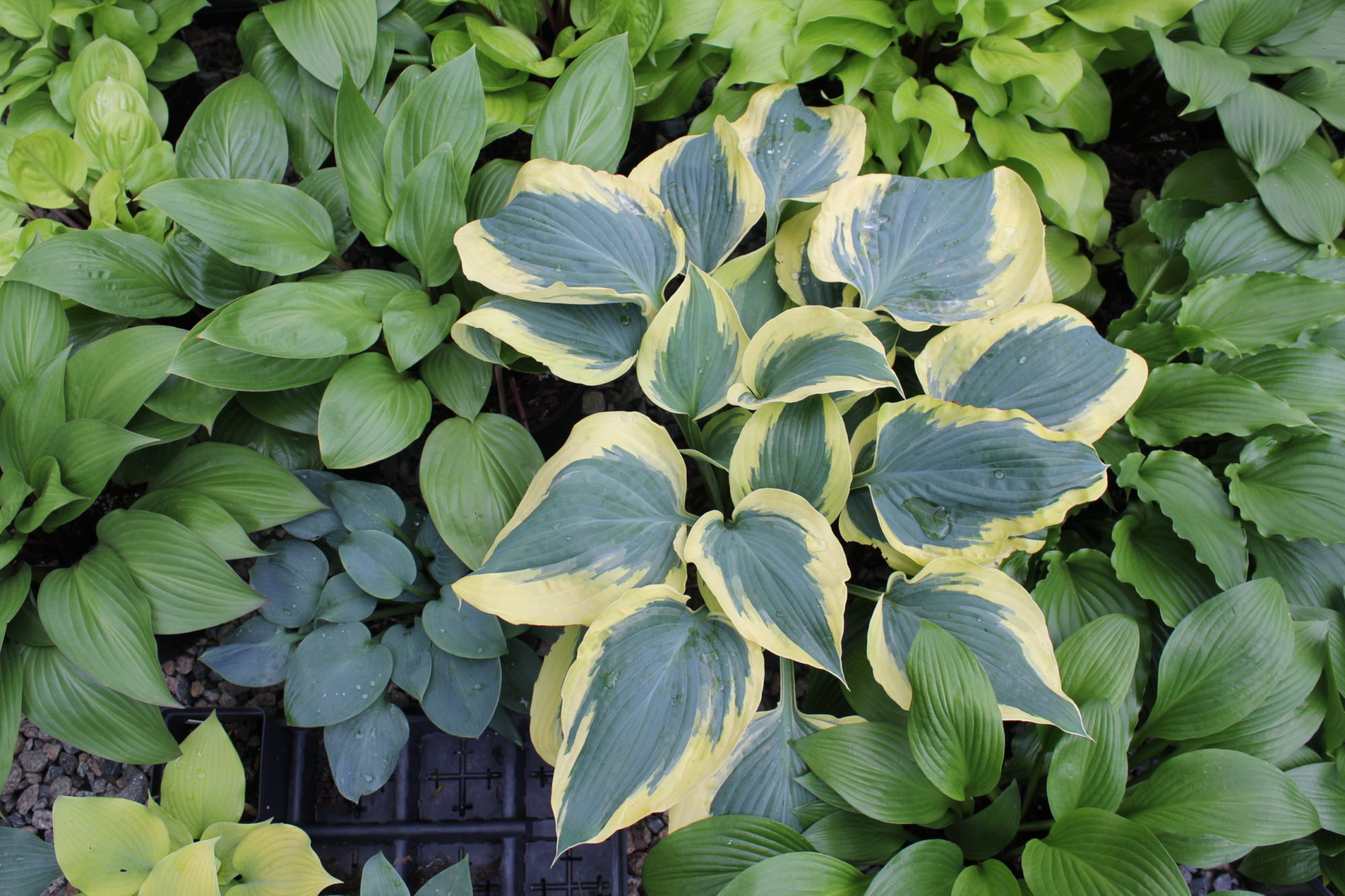Thoughts off the top of my head: August 2004
Welcome to the new and improved “Gossip Jr.”. Now you can get all the latest hosta gossip twice a year albeit for a small fee. In keeping with my theory that “hostas are supposed to be fun”, I intend to have a lot of fun with this newsletter. Hopefully it will be entertaining, helpful and honest as gossip can be. Remember, all opinions are those of the editor and are not necessarily accepted hosta doctrine, as yet.
I see many of you each year at the AHS National Convention. Unfortunately the schedule has become so packed with events that we rarely have time to talk about hosta stuff or even what is happening at the convention. I would love a little discussion time worked in there somewhere.
This year in Des Moines the hostas were at their finest with all the spring rain. I really think the blue hostas stole the show, especially at the Wilson’s garden. In the evening light, every richly waxed leaf beckoned my eye. It surely disproved the myth that heavy rain will wash off all that white wax and turn blue hostas to green.
Hostas aside, it was the Stark garden that evoked special memories for me. It was a walk back in time, back to the way hostas were grown before the invention of the plastic bursary pot. Massive clumps, nourished by years of chicken manure, spreading wide over that wonderful Iowa soil. Some plants had been lined out, but yes, they would dig out you a piece out of the clump.
It took me back over 20 years to Bettie Jernigan’s garden in North Carolina. It was the same wooden shade structure over a chicken lot, the same huge clumps of hostas and digging out of the clump. It was the same ambiance, like going back to the good old days of hostas.
Some of the hostas were historic, some unique and one was an old friend of mine. I was reunited with the ‘Sum and Substance’ sport (now ‘Gunther’s Prize’) that I offered for silent auction some seven years ago in Indianapolis. In that rich Iowa soil it had grown to become the ultimate streaked hosta of my dreams. It caught every eye.
·
Some say timing is everything. Perfect unintentional timing is a rare coincidence. It is like comets colliding, it can produce world changing events. Such an event has shook the hosta world this summer and only time will tell how widespread the fallout will be.
Of course, I am talking about the arrival of The Hosta Journal in your mailbox with a detailed article about foliar nematodes right at the height of foliar nematode season. Many of you read the article and then walked outside to find that alien worms were inhabiting your garden. What to do?
Take a deep breath! There is no need for complete depression. True, if you have a very widespread infestation you may never be able to get all of them out of the garden but the symptoms can be controlled. If you have just a random plant here or there in the garden with worms, dig it out and all those next to it, (touching it) and throw them away. If this is only 10-15% of your collection it is probably worth doing.
If the problem is more wide spread then follow the advice in the article to control the symptoms, the brown streaks. Almost anything will kill the worms you just need to be persistent and you will see less damage as the years go by. It is a matter of comfort level and please do not go crazy with these chemicals, if they kill nematodes they kill other things also. In all cases try to buy “clean” plants in the future.
As a good gardener and consumer you have, in my opinion, a couple of responsibilities with regard to all this. First, please do not sell, bring to a plant swap or donate to an auction or plant sale any hostas that may have foliar nematodes. If there are worms in that area of the garden, even if the plant shows no symptoms and never has, leave it at home. Feel free to swap with other gardeners who know the risk or already have the problem, but tell them, “This hosta may have foliar nematodes.” You can add, “It may not”, if you do not know.
Secondly, if you buy a plant in the spring and with in a couple of months symptoms of foliar nematodes appear, please notify the nursery or grower who sold you the plant. Give them a chance to make it right. Also the only way for growers to know they have a problem sometimes is for you to tell them. Let them check their stock to see if their plants show any symptoms.
August is a great time for hosta shopping. Many plants have reduced prices and you can be on the lookout for foliar nematodes. Do not be afraid to ask a grower, “What do you do to control foliar nematodes in your nursery?” If there are many controls in place then you have a good chance of buying a clean plant.
Any questions? I’ll be glad to help identify symptoms if you need. Just send me a photo. Physiological help is 5 cents.

